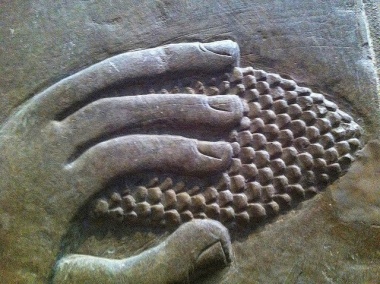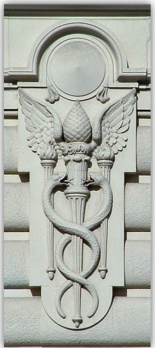Pinienzapfen: Unterschied zwischen den Versionen
| Zeile 19: | Zeile 19: | ||
Bild:Fibonacci-Spirale.jpg|Fibonacci-Spirale | Bild:Fibonacci-Spirale.jpg|Fibonacci-Spirale | ||
Bild:JRPinienzapfen.jpg|Skizze [[Jens Rusch]] | Bild:JRPinienzapfen.jpg|Skizze [[Jens Rusch]] | ||
| − | Bild: | + | Bild:Sumerer-Leinwand.jpg|Skizze [[Jens Rusch]] |
Bild: | Bild: | ||
</gallery> | </gallery> | ||
Version vom 6. Januar 2016, 10:22 Uhr
Pinienzapfen
"Behold for I am the seed. Small enough to not be seen or for the feeble minded to not understand and underestimate my size. Thou within me is the ability to create an entire forest."
"Siehe, denn ich bin der Nachkomme. Klein genug, um nicht gesehen werden oder für die Schwachen zu verstehen denn sie unterschätzen meine Größe. Aber in mir ist die Fähigkeit, einen ganzen Wald zu schaffen."
Pinienzapfen-Symbolik
Im Christentum gilt die Pinie als Lebensbaum und ihre Zapfen gelten als Symbole der Auferstehung und der Unsterblichkeit. Diese Symbolik wurde aus den antiken Kulten der Isis, des Dionysos sowie der Kybele übernommen. Die Römer schmückten in den mitteleuropäischen Provinzen Pfeilergräber mit den Zapfen. Außerdem soll er das Symbol der Göttin Cisa sein. Heute schmückt das Symbol des Zapfens das Wappen der Stadt Augsburg und wird häufig auch Zirbelnuss genannt. Auch im Vatikan ist der Pinienzapfen eine häufig wiederkehrende Metapher.
In der Esoterik wird der Pinienzapfen als Metapher zum Öffnen des "Dritten Auges" verwendet.
Ein goldener Pinienzapfen ziert das Dach des Elisenbrunnens in Aachen.
Skizze Jens Rusch
Skizze Jens Rusch
Informationsquellen
(Bitte übersetzen)
"Sufficient similarity exists between the Masonic Hiram and the Kundalini of Hindu mysticism to warrant the assumption that Hiram may be considered a symbol also of the Spirit Fire moving through the sixth ventricle of the spinal column. The exact science of human regeneration is the Lost Key of Masonry, for when the Spirit Fire is lifted up through the thirty-three degrees, or segments of the spinal column, and enters into the domed chamber of the human skull, it finally passes into the pituitary body (Isis), where it invokes Ra (the pineal gland) and demands the Sacred Name. Operative Masonry, in the fullest meaning of that term, signifies the process by which the Eye of Horus is opened.
E. A. Wallis Budge has noted that in some of the papyri illustrating the entrance of the souls of the dead into the judgment hall of Osiris the deceased person has a pine cone attached to the crown of his head. The Greek mystics also carried a symbolic staff, the upper end being in the form of a pine cone, which was called the thyrsus of Bacchus. In the human brain there is a tiny gland called the pineal body, which is the sacred eye of the ancients, and corresponds to the third eye of the Cyclops. Little is known concerning the function of the pineal body, which Descartes suggested (more wisely than he knew) might be the abode of the spirit of man. As its name signifies, the pineal gland is the sacred pine cone in man – the eye single, which cannot be opened until CHiram (the Spirit Fire) is raised through the sacred seals which are called the Seven Churches in Asia.”
~Manly P. Hall, Secret Teachings of All







